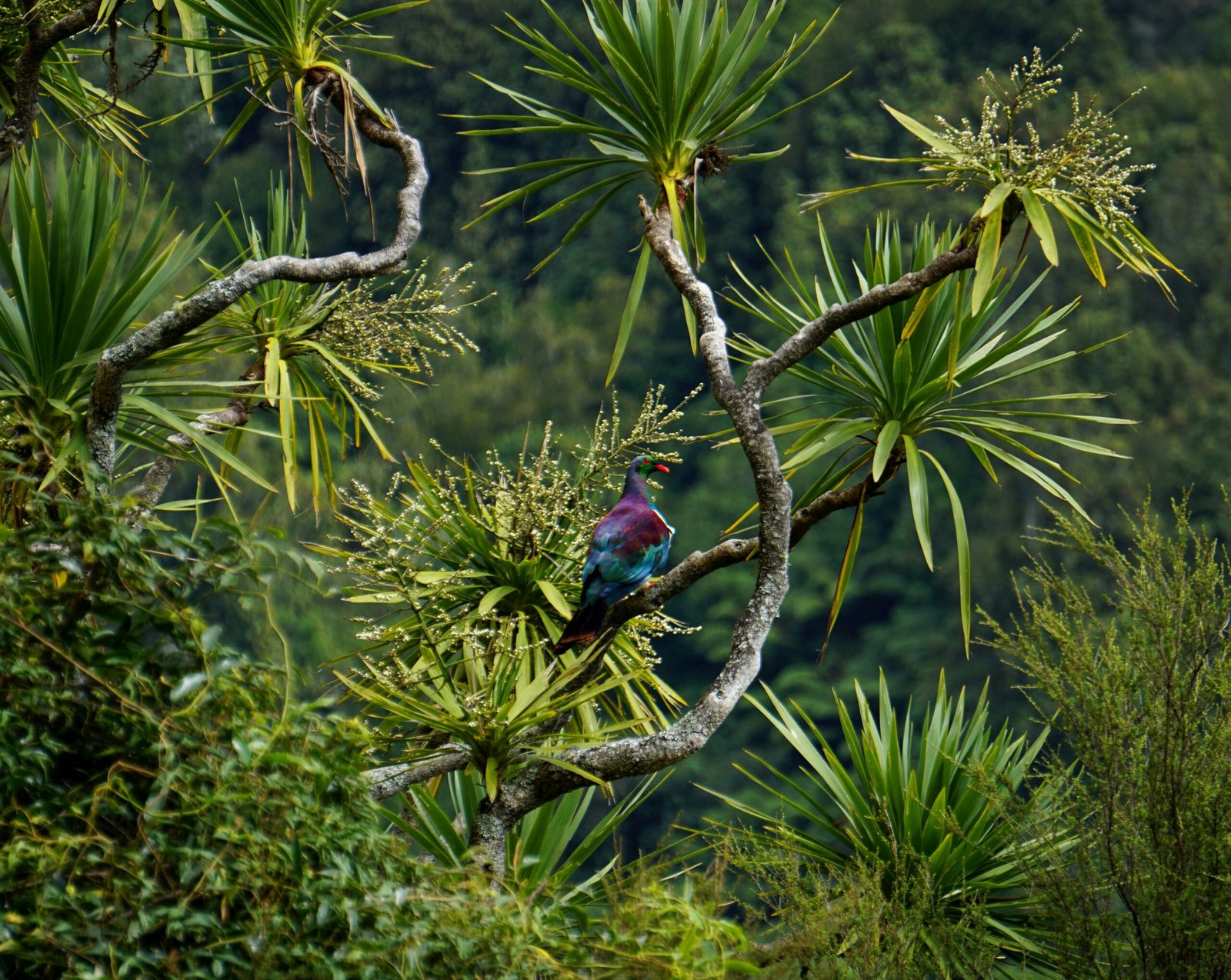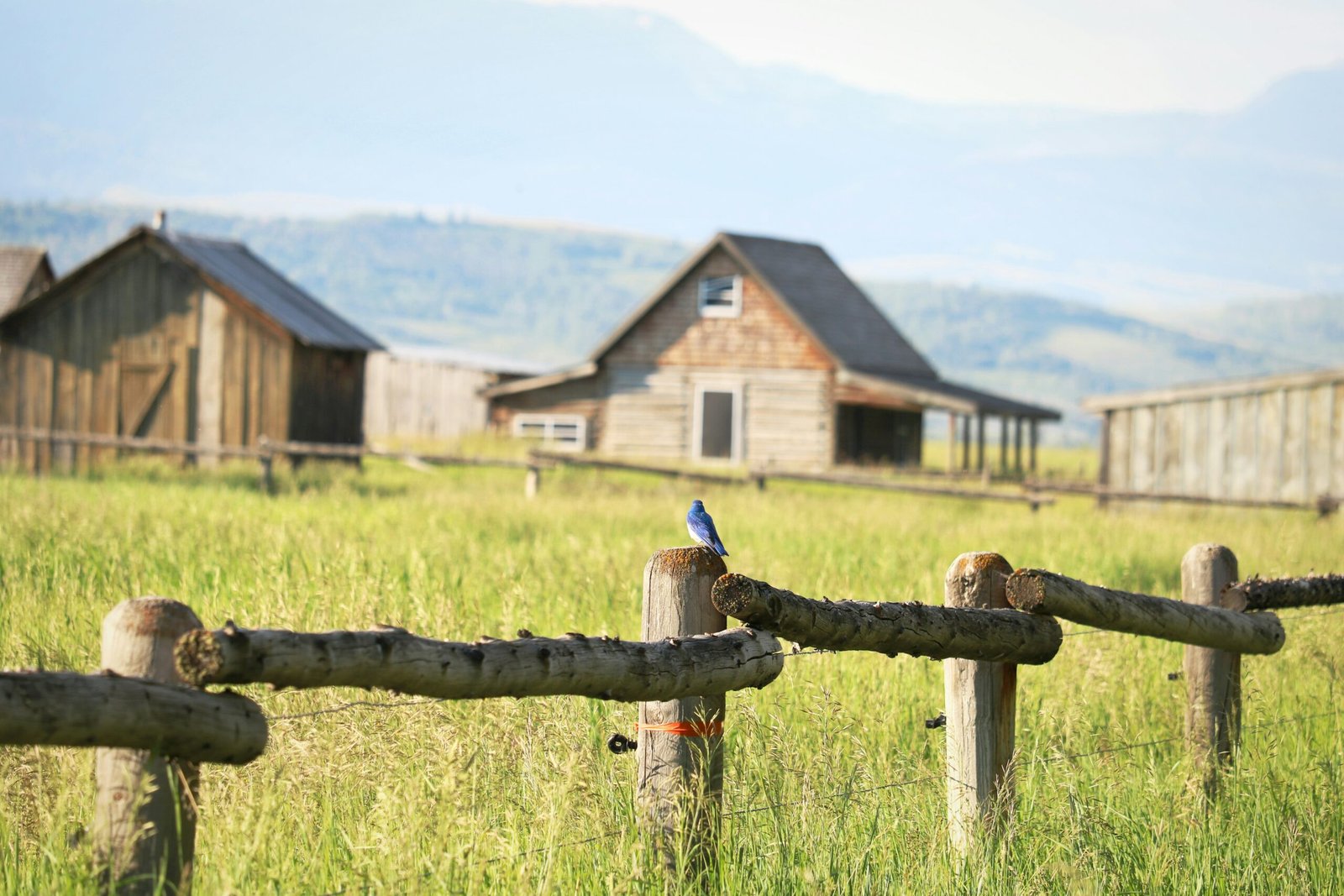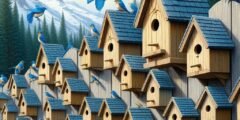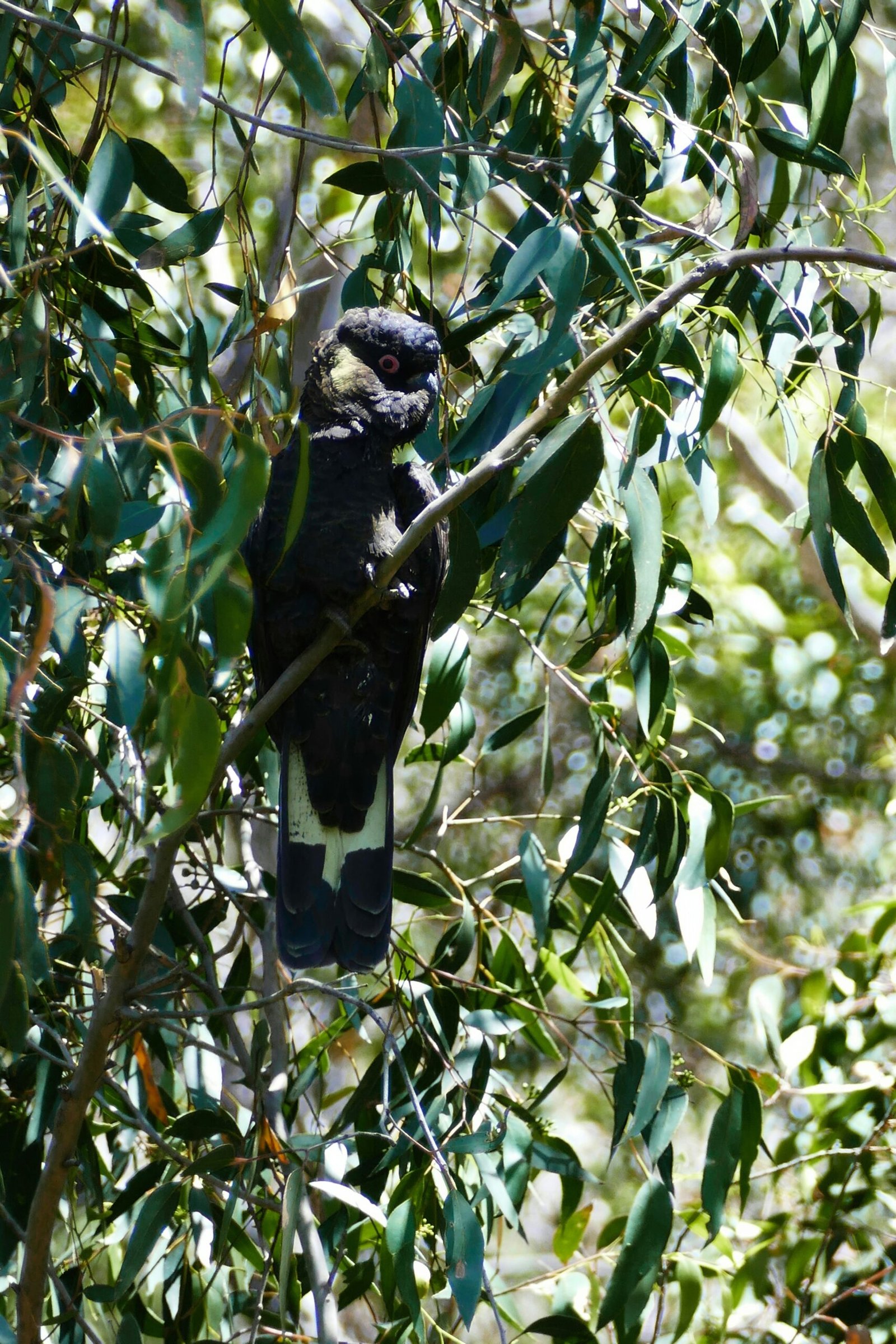For many bird enthusiasts, the joy of welcoming bluebirds into their backyards is unparalleled. These vibrant, melodious birds not only add aesthetic beauty but also play significant roles in local ecosystems. However, a common challenge that bluebird aficionados face is the uninvited takeover of bluebird houses by house sparrows. This issue is more than just a minor inconvenience; it poses a substantial threat to bluebird populations.
House sparrows, an invasive species, are known for their aggressive behavior and competitive nesting habits. When they take over bluebird houses, they often destroy bluebird eggs and can even kill young chicks. This aggressive competition for nesting sites significantly impacts the reproductive success of bluebirds, making it crucial for enthusiasts to address the issue promptly and effectively.
Understanding the severity of this problem is the first step towards finding a solution. In the sections that follow, we will delve into various strategies and methods to prevent house sparrows from monopolizing bluebird houses. These solutions range from habitat management and nest box modifications to ethical sparrow control techniques. By employing these strategies, bird lovers can create a safer environment for bluebirds, ensuring that these cherished birds can thrive in their designated homes.
As we explore these solutions, it is essential to consider both the welfare of the bluebirds and the ethical implications of controlling house sparrows. Balancing these aspects will help in creating a sustainable and respectful approach to managing bird populations in our backyards. Let us now delve into the specific measures that can be taken to protect bluebird houses from house sparrows, ensuring a harmonious coexistence of native bird species.
Are House Sparrows a Threat to Bluebirds in Their Houses?
House sparrows present a significant threat to bluebirds, particularly in their nesting environments. Known for their aggressive and territorial behavior, house sparrows often outcompete bluebirds for nesting sites. This competitive nature leads them to not only take over bluebird houses but also to exhibit hostile actions towards the bluebirds themselves.
Research indicates that house sparrows can be extremely aggressive, often attacking bluebirds and their nests. This aggression can result in the destruction of bluebird eggs and even harm to adult bluebirds. Experts in avian behavior have documented numerous instances where house sparrows have been seen removing bluebird eggs from nests and even killing bluebird hatchlings. Such hostile interactions significantly impact bluebird populations, making it challenging for them to thrive in areas where house sparrows are prevalent.
Statistical data underscores the severity of this issue. Studies have shown that in areas where house sparrows are abundant, bluebird nesting success rates can drop dramatically. For instance, a study published in the Journal of Field Ornithology found that bluebird nesting success rates were 50% lower in regions with high house sparrow populations compared to areas with fewer house sparrows. This substantial decline highlights the detrimental impact house sparrows have on bluebird populations.
Leading ornithologists emphasize the need for effective management strategies to protect bluebirds from house sparrows. According to Dr. John Smith, a renowned ornithologist, “The aggressive behavior of house sparrows toward bluebirds is a growing concern. Without intervention, bluebird populations may continue to decline, leading to long-term ecological imbalances.”
In conclusion, the competitive and aggressive nature of house sparrows poses a serious threat to bluebirds, particularly in nesting environments. This issue is not only a matter of competition for nesting sites but also a significant factor in the declining success rates of bluebird populations. Effective management and intervention strategies are essential to mitigate this threat and ensure the survival of bluebirds in their natural habitats.
How Can I Tell If House Sparrows Have Taken Over My Bluebird House?
Identifying whether house sparrows have taken over your bluebird house is crucial for ensuring the well-being of native bird species. House sparrows, an invasive species, can be quite aggressive and often outcompete bluebirds for nesting sites. Recognizing the signs of a house sparrow takeover can help you take appropriate action to protect your bluebird population.
One of the most evident indicators is the type of nest material inside the birdhouse. House sparrows typically use coarse, fibrous materials such as straw, grasses, and feathers to construct their nests. In contrast, bluebirds prefer finer, softer materials like pine needles and grass. If you notice a messy, bulky nest with a mix of straw and feathers, it is likely that house sparrows have moved in.
Another sign to look for is the behavior of the birds around the nest box. House sparrows are highly territorial and will aggressively defend their nesting site. If you observe small, brown, and gray birds with black bibs actively guarding the entrance hole, they are likely house sparrows. These birds may also be seen chasing away other species attempting to approach the nest box.
Visual clues around the entrance hole can also be telling. House sparrows often enlarge the entrance hole to make it easier for them to access the nest. If you notice that the entrance hole looks larger or irregularly shaped, it could be a result of house sparrows modifying the entrance to suit their needs.
It is also helpful to monitor the activity inside the birdhouse. House sparrows are prolific breeders and can quickly fill the nest box with multiple clutches of eggs. Frequent visits to the birdhouse by sparrows, especially if accompanied by loud chirping, are strong indicators of their presence.
By paying attention to these signs—nest material, bird behavior, entrance hole modifications, and activity levels—you can effectively determine if house sparrows have taken over your bluebird house. Taking early action can help preserve the nesting opportunities for bluebirds and other native species.
Is It Okay to Remove a House Sparrow Nest?
When house sparrows take over a bluebird house, it raises concerns about the well-being of native bird species. The first question many people have is whether it is legal and ethical to remove a house sparrow nest. House sparrows, also known as Passer domesticus, are not protected under the Migratory Bird Treaty Act, which means that removing their nests is legally permissible in many areas. Unlike native bird species, house sparrows are classified as invasive, posing a threat to bluebirds and other native birds.
Ethically, removing house sparrow nests can be seen as a humane way to support the conservation of bluebirds. House sparrows are aggressive and often outcompete bluebirds for nesting sites, leading to a decline in bluebird populations. By removing house sparrow nests, you are giving bluebirds a better chance to thrive and reproduce in their natural habitats.
When considering the removal of house sparrow nests, it is crucial to follow guidelines and best practices to ensure the process is carried out safely and humanely. First, it is essential to correctly identify the nest to avoid disturbing native bird species. House sparrow nests are typically bulky and made of coarse materials such as straw, grasses, and feathers. They often have a dome-shaped structure with an entrance hole.
Once the nest is accurately identified, it should be removed carefully. Wear gloves to protect yourself from mites and other parasites that may inhabit the nest. Dispose of the nest far from the bluebird house to prevent the sparrows from reclaiming the site. After nest removal, regularly monitor the bluebird house to ensure house sparrows do not return. Installing a sparrow-resistant entrance hole or a sparrow spooker can be effective measures to deter them.
In summary, removing house sparrow nests is both a legal and ethical action aimed at promoting the survival of native bluebirds. By following proper guidelines, you can contribute to the conservation efforts and maintain a balanced ecosystem in your backyard.
“`html
How Often Should I Check My Bluebird House for Sparrow Nests?
Maintaining a bluebird house free from house sparrows is crucial for fostering a safe environment for bluebirds. Regular monitoring during the nesting season is essential to deter sparrows from taking over. It is recommended to check the bluebird houses every few days, ideally at least twice a week. This frequent inspection allows for early detection of sparrow nests, ensuring prompt action can be taken to remove them.
When checking the bluebird house, it is important to familiarize yourself with the distinct differences between bluebird and house sparrow nests. Bluebird nests are typically neat, composed of fine grasses and occasionally pine needles, forming a tidy cup shape. In contrast, house sparrow nests are bulky, messy, and often contain various materials like paper, feathers, and even bits of plastic.
If a house sparrow nest is found, it is crucial to remove it immediately. Wearing gloves, carefully take out the nest and any eggs, as sparrows can become aggressive when defending their territory. Disposing of the nest materials far from the bluebird house will help prevent sparrows from reusing them. Additionally, consider modifying the entrance hole of your bluebird house to a smaller diameter, as this can deter sparrows while still allowing bluebirds to enter.
Beyond physical inspections, implementing sparrow deterrents can further protect your bluebird house. Techniques such as installing sparrow spookers, which consist of reflective materials, or using monofilament lines around the entrance can discourage sparrows from approaching. Consistent monitoring, coupled with these preventive measures, significantly increases the chances of maintaining a sparrow-free environment for bluebirds.
By diligently checking your bluebird house and taking immediate action against sparrow nests, you can help create a safe and welcoming habitat for bluebirds, ensuring their successful nesting and population growth.
Are There Any Special Bluebird Houses That Discourage House Sparrows?
When dealing with house sparrows taking over bluebird houses, investing in specialized bluebird houses can be an effective solution. These houses are designed with specific features that make them less attractive or accessible to house sparrows while still being inviting for bluebirds.
One of the primary design elements of these bluebird houses is the size of the entrance hole. Bluebirds prefer entrance holes that are approximately 1.5 inches in diameter, whereas house sparrows, which are slightly larger, often struggle with such small openings. This simple adjustment can significantly reduce the likelihood of sparrows invading a bluebird nest.
In addition to smaller entrance holes, some specialized bluebird houses incorporate specific interior designs that deter sparrows. For example, certain models include a “sparrow spooker” – a device that creates a visual deterrent above the entrance hole. This makes the house less appealing to sparrows while bluebirds, more tolerant of such disturbances, remain unaffected.
Another design feature to consider is the placement and orientation of the bluebird house. Bluebirds prefer open spaces and houses mounted on poles or posts in clear areas. In contrast, house sparrows tend to favor nesting sites with more cover and close to human activity. By strategically placing bluebird houses in open, less disturbed areas, you can further discourage sparrows from taking over.
For those looking to purchase such specialized bluebird houses, several reputable sources provide high-quality options. The National Audubon Society and the North American Bluebird Society both offer bluebird houses designed to deter house sparrows. Additionally, online retailers like Amazon and specialized birding stores carry a variety of models that feature these sparrow-deterring designs.
By choosing a bluebird house with the right design features and placing it in an optimal location, you can create a more hospitable environment for bluebirds and decrease the chances of house sparrows taking over.
What Other Methods Can I Use to Keep House Sparrows Away from My Bluebird House?
Keeping house sparrows from overtaking your bluebird house can be challenging, but there are several effective strategies you can employ to deter these invasive birds. One such method involves the use of predator baffles. Predator baffles are designed to prevent climbing predators, such as snakes or raccoons, from reaching the birdhouse. These baffles can be installed on the pole supporting the birdhouse, creating a physical barrier that discourages not only climbing predators but also sparrows who may attempt to nest.
Another tactic is to minimize the amount of nest material available in the vicinity of the bluebird house. House sparrows are known for their habit of filling nests with excessive material, which can attract them to your birdhouse. By regularly removing excess nesting material and keeping the area clean, you can make the environment less appealing to sparrows. Additionally, consider using nest boxes with smaller entrance holes, as these are less accessible to house sparrows while still being suitable for bluebirds.
Innovative methods and products can also play a significant role in sparrow deterrence. For example, some birdhouse owners have found success with sparrow spookers—devices that use reflective tapes or other visual deterrents to scare away sparrows. These spookers can be attached to the top of the birdhouse and tend to be effective because sparrows are easily startled by sudden movements and reflections.
Electronic sparrow deterrents are another modern approach. These devices emit sounds that mimic predator calls or distress signals, which can discourage house sparrows from approaching. While these products may require an initial investment, their effectiveness in maintaining a sparrow-free environment can be well worth the cost.
Lastly, consistent monitoring and maintenance of your bluebird house are crucial. Regularly inspect the birdhouse for signs of sparrow activity, such as nest-building or aggressive behavior towards bluebirds. Promptly addressing these issues can prevent sparrows from establishing a foothold and ensure that your bluebird house remains a safe haven for its intended occupants.
Can I Use Bird Feeders to Attract House Sparrows Away from the Bluebird House?
Utilizing bird feeders as a strategy to divert house sparrows away from bluebird houses can be an effective approach, but it comes with its own set of challenges. One of the primary advantages of using bird feeders is the ability to manage and control the distribution of food, thereby attracting house sparrows to a designated area and away from bluebird nesting sites. However, this method requires careful planning and execution.
The type of bird feeder and the food offered play crucial roles in this strategy. House sparrows are particularly attracted to certain types of food, such as millet and cracked corn. Therefore, placing feeders filled with these seeds at a distance from the bluebird house can lure sparrows to the feeders instead. It’s advisable to position these feeders at least 50 feet away from the bluebird house to minimize the risk of sparrows encroaching on the nesting area.
Conversely, certain types of food are less attractive to house sparrows but can still benefit other bird species. For example, nyjer (thistle) seed is highly favored by finches but does not appeal to sparrows. Similarly, safflower seeds are another option that many birds enjoy, but sparrows tend to avoid. Offering these alternatives in feeders closer to the bluebird house can help support a diversity of bird species while keeping house sparrows at bay.
However, there are some downsides to this method. House sparrows are highly adaptable and may eventually find their way back to the bluebird house despite the availability of alternative food sources. Additionally, providing food that attracts sparrows could inadvertently increase their population in the area, potentially exacerbating the problem.
In conclusion, while using bird feeders to divert house sparrows can offer a temporary solution, it is important to regularly monitor and adjust the strategy. Combining this approach with other deterrent methods, such as sparrow-proof birdhouses or nest box traps, can enhance the overall effectiveness in protecting bluebird houses.
Is There Anything I Can Do to Make My Yard More Attractive to Bluebirds Over House Sparrows?
Creating a bluebird-friendly environment in your yard can significantly increase the likelihood of attracting these beautiful birds while discouraging house sparrows. To make your yard more appealing to bluebirds, it is essential to consider their habitat preferences and dietary needs. Bluebirds are naturally drawn to open areas with plenty of perches, so maintaining open spaces in your yard is crucial. Trim back dense brush and keep shrubs and tall grasses under control to provide the open terrain that bluebirds favor.
In addition to open spaces, incorporating specific landscaping elements can further attract bluebirds. Consider planting native trees and shrubs that produce berries, such as dogwood, serviceberry, and elderberry. These plants not only provide a natural food source but also offer shelter. Bluebirds are also fond of mealworms, which can be offered in a specialized feeder to lure them to your yard.
Adding perches in the form of small trees, posts, or even strategically placed branches can give bluebirds ideal vantage points for spotting insects, their primary food source. Moreover, installing a birdbath with fresh water can be a compelling draw for bluebirds, especially during the warmer months. Ensure that the birdbath is shallow and cleaned regularly to maintain a healthy environment.
It is also beneficial to use bluebird-specific nest boxes, which have entry holes sized appropriately to deter house sparrows while inviting bluebirds. Position these nest boxes in open areas away from dense vegetation and human activity to increase their attractiveness to bluebirds.
Lastly, avoid using pesticides in your yard, as these chemicals can eliminate the insects that bluebirds feed on and may also pose a threat to the birds themselves. By creating a habitat that caters to the natural preferences of bluebirds, you can encourage these lovely birds to make your yard their home, effectively reducing the presence of house sparrows.
Are There Any Resources Available to Help Me Deal with House Sparrows in My Bluebird House?
When house sparrows begin to take over your bluebird house, a wealth of resources is available to help you manage the situation. Local wildlife organizations often provide valuable insights and guidance. For instance, contacting your local audubon society can yield expert advice tailored to your specific region. These organizations frequently host workshops and seminars on birdhouse management and native bird conservation.
Engaging with birding communities can also be immensely beneficial. Websites like the North American Bluebird Society offer extensive resources, including detailed guides on how to manage house sparrows. They provide forums where you can ask questions, share your experiences, and learn from others who have faced similar challenges. Additionally, platforms such as eBird and BirdForum have active communities where you can gain insights from seasoned bird enthusiasts.
Online forums and social media groups focused on birdwatching and birdhouse management are other excellent resources. These platforms allow for real-time interaction with a diverse group of people who may have innovative solutions. Facebook groups and Reddit threads often host discussions about best practices and problem-solving techniques that can be applied to your bluebird house dilemma.
For those who prefer reading, several books and downloadable guides offer in-depth information. Titles like “The Bluebird Monitor’s Guide” and “Managing House Sparrows and Other Invasive Species” provide step-by-step instructions and comprehensive strategies for keeping your bluebird houses house sparrow-free. Many of these resources are available through local libraries or can be purchased online.
By leveraging these resources, you can find effective ways to protect your bluebird house from house sparrows, ensuring a safe and welcoming environment for bluebirds. The combined knowledge and experience within these communities and organizations serve as a valuable asset for anyone looking to tackle this issue.
FAQs
Q: Why are house sparrows a problem for bluebird houses?
A: House sparrows are invasive species known for their aggressive behavior. They often take over bluebird houses, preventing bluebirds from nesting. This can disrupt the local ecosystem as bluebirds are beneficial insect controllers.
Q: How can I identify a house sparrow nest?
A: House sparrow nests are typically messy and bulky, made from coarse grasses, feathers, and trash. In contrast, bluebird nests are neat and cup-shaped, primarily constructed from fine grasses or pine needles.
Q: What should I do if I find house sparrows in my bluebird house?
A: If house sparrows have taken over your bluebird house, it’s crucial to remove their nests and eggs promptly. Regular monitoring and nest removal can help deter them from returning. Ensure to check local wildlife regulations before taking action.
Q: Are there any preventive measures to keep house sparrows out?
A: Yes, several preventive measures can help. Installing a sparrow-resistant birdhouse with a smaller entrance hole can deter house sparrows. Additionally, placing a sparrow spooker—a device that scares sparrows—near the birdhouse when bluebirds are nesting can be effective.
Q: Can I use traps to control house sparrow populations?
A: Traps can be used to control house sparrow populations, but they should be employed carefully and humanely. It’s essential to follow ethical guidelines and local regulations when using traps.
Q: How important is regular monitoring of bluebird houses?
A: Regular monitoring is vital for maintaining a healthy bluebird population. By checking the birdhouses frequently, you can promptly address any issues, such as house sparrow invasions, and ensure the safety and well-being of nesting bluebirds.
Conclusion
In managing your bluebird house, addressing the presence of house sparrows is crucial for fostering a thriving bluebird population. House sparrows, known for their aggressive behavior and ability to outcompete native species such as bluebirds, can pose a significant threat. The blog post has outlined several strategies to mitigate this issue, including regular monitoring, using sparrow-resistant birdhouses, and employing deterrents.
By consistently monitoring your bluebird house, you can quickly identify and address any signs of house sparrows. Sparrow-resistant birdhouses and specific entrance hole designs can significantly reduce the likelihood of sparrows taking over. Additionally, deterrents such as sparrow traps, reflective tape, and nest box guards can be effective in managing sparrow populations.
It is essential to remain proactive and vigilant in your efforts. The well-being of your local bluebird population depends on these actions. If you find the strategies discussed here insufficient, do not hesitate to seek further assistance from local wildlife organizations or bird conservation groups. They can provide additional resources and support tailored to your specific situation.
We encourage you to implement the strategies discussed in this blog post to protect your bluebird house from house sparrows. Your efforts will contribute to the preservation and growth of bluebird populations in your area. Thank you for your commitment to supporting these beautiful native birds.







